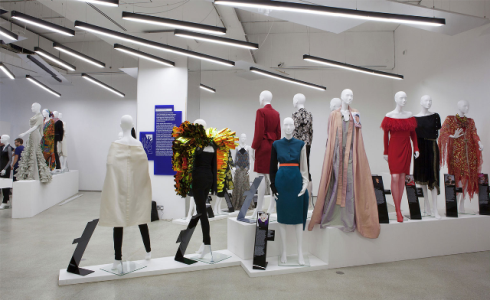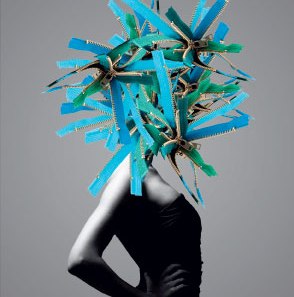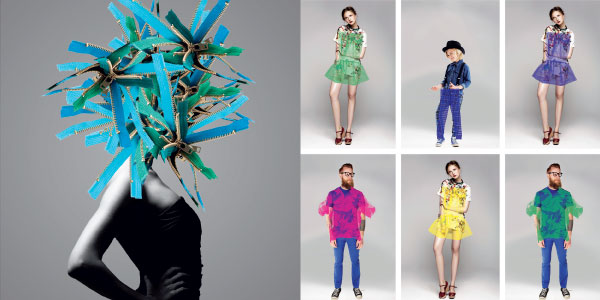FW

Japan, is ready to roll out the red carpet for Indian textile manufacturers and designers to showcase their creativity to Japanese buyers and designers. The Japan India Industry Promotion Association (JIIPA) is organising the three-day ‘India Trends Fair 2015’ (ITF) in Tokyo from July 15 to 17 offering a comprehensive platform to Indian apparel manufacturers and designers.
Indian designers, apparel makers get a platform
Shigemaro Yasui, Chairman, JIIPA says, “JIIPA has been formed to foster business between India and Japan. Industrial and cultural exchanges between the two countries continue to gain momentum. The culture of fashion has been thriving strongly in response to the rapid growth in industrial and commercial relationships with a number of fashion events. The ‘India Trends Fair 2015’ in Tokyo will intensify the focus on fashion and create new perspectives. The scope of the fair extends beyond textiles and materials to encompass a fusion of new fashion and cultures.”

Yasui, further focuses on the need to strengthen business ties with India, “Japan imports 90 per cent apparels from China and only three per cent from India. We want India to be the best partner of Japan for which we need support and help of Indian people. We will start the initiative with textiles, which is an important consumer product. We want India to have a 65 per cent and China 30 per cent share. That will help India enter the Japanese mindset and fuel Japanese people’s interest in India which will also help tourism grow.”
Guiding participants on Japanese tastes
Besides organizing the fair, JIIPA also has plans to educate participants prior to the event. Throwing more light on this aspect, Yasui says, “As Indians know nothing about the latest trends in Japan, we’ve plans to brief them on how to design fashion products for Japan. We customize fashion and design for Japan. Indian manufacturers can bring these products to Japan through this trend fair to be held in July. This is also about home furnishings, handicrafts and accessories,” he explained.
The organizers also plan to hold ‘Trend Workshops’ in India prior to the Tokyo event. “In April we will participants an idea about next year’s trends in Japan. We will organize workshops and seminars for Indian manufacturers and designers in Delhi, Mumbai and other cities. We will coordinate with 20 to 30 companies and brief them on what they should make, and how to design our products. It will help them prepare for the exhibition,” Yasui informed.
ITF 2015 is supported by the Embassy of India in Tokyo, the Consulate General of India in Osaka-Kobe, the Japan-India Association, the Japan-India Business Cooperation Committee and Ministry of Economy, Trade and Industry.
Bowing to pressure from animal rights activists, Inditex, the world’s largest fashion retailer and parent company of Zara and Massimo Dutti, will stop selling clothing made from angora in its more than 6,400 stores around the world. Thousands of fluffy jumpers and angora coats and caps now sitting in its warehouses will be sent to Syrian refugees in Lebanon. The announcement comes after talks with People for the Ethical Treatment of Animal (Peta), which had conducted an investigation into the production of the luxury fibre.
Peta, after visiting angora farms in China, had released graphic footage in 2013 showing fur being ripped out of live rabbits to ensure the angora fibres were as long and thick as possible. The rabbits, whose front and back paws were tied, screamed and writhed in pain as their fur was torn out. Bald and bleeding, the rabbits were pushed back into cramped cages to regrow their fur until it could be plucked again.
The footage reflected the standard conditions for angora rabbits in China, which today is home to 90 per cent of the angora fur trade, said Peta. The investigation prompted several retailers, including Marks & Spencer, Topshop, Primark and H&M to stop selling garments made from angora.
Inditex, controlled by founder Amancio Ortega, one of the world’s richest people, initially stayed quiet. Now the company has said it will not be resuming sale of angora. After consultation with animal welfare organisations to explore more sustainable ways to produce angora and help develop better standards within the industry, it has decided to ban angora production. The Inditex statement was welcomed by Peta.
With 1,101 cents a kilogram, the highest point in two years, wool prices are seeing a decent rally in the past two weeks in Eastern Market Indicator. Fine wool has seen the largest price increase, with 17-micron wool making 1388 cents a kilogram, up 94 cents for the fortnight. Cardings made of 880 cents a kilogram, is believed to be a record high price. Stronger wool is also doing good with 30-micron wool making 765 cents a kilogram, the most the category has made in 60 years.
Bruce McLeish, wool manager with Elders northern, says the 60-cent rise in the past two weeks has been driven by the lower dollar and rising demand from the Chinese. China’s long awaited recovery appears to be gaining some strength, confidence does seem to be slowly returning to consumers there and there’s a flurry of domestic orders in the sweaters and other garments.
It has been a tough year to produce wool, with dry weather reducing lambing rates and wool yield and quality. The Australian Wool Production Forecasting Committee has forecast production in the 2014-’15 season at 334 million kg down by 2 per cent from the 2013-’14 season total of 341 million kg.
Garment manufacturers are returning to Philippines to take advantage of the zero duty export privilege the wealthy 28-member EU countries under the EU GSP Plus program. The zero duty privilege of Philippines under the EU GSP Plus program took effect in mid December last year. This grants zero tariff to over 6,000 product lines from the Philippines. Garment buyers for the EU have been enquiring for possible supply. Buyers and manufacturers are now expected to flock to the country because of the export privilege.
The Philippines expects to increase exports to the EU by 35 per cent and create 2,00,000 jobs as a result of the preferential status. Garments, textile products and footwear are among the top sectors expected to benefit from the GSP upgrade. Hundreds of thousands of jobs are expected to be created in the countryside and specifically in disaster stricken areas.
In the Asean region, which includes Brunei, Cambodia, Indonesia, Laos, Malaysia, Myanmar, Philippines, Singapore, Thailand and Vietnam, the Philippines is the only EU GSP Plus beneficiary country. With this benefit, Philippines exporters will have better access and comparative advantage in the EU market. The country hopes to become a manufacturing hub for the Asean region.

More than 630 international exhibitors are unveiling their new Spring/Summer 2016 collections at the Texworld trade fair that commences today, the fair has managed to attract 70 new exhibitors from South Korea, China, the UAE, India, Hong Kong, Malaysia, Portugal and Turkey. The exhibitors are displaying their latest offerings under different sections like cotton, knits, silk & silky aspects, lace & embroidery and so on.
The cotton segment will host 12 new exhibitors, amongst them Dacheng Textile is exhibiting a huge range of fabrics for shirting and casualwear in 100 per cent cotton or with linen, Tencel and polyester blends. Its midrange offer of refined finishes is aimed particularly at casual womenswear collections. The two Turkish companies Hisar Tekstil of Istanbul and Bahateks Tekstil of Bursa are showcasing a range of midrange voiles in extremely high-quality finishes for men’s and women’s wear. Silkland Trading from the UAE has its closely-worked cotton, original prints and embroidery range intended to appeal to buyers of womenswear looking for value additions.

Knits segment has experienced the strongest growth, with 13 new producers of fabrics for children’s and infants ready-to-wear ranges. Collections from South Korea, appreciated by buyers for its cutting-edge technology, are leading the way in creativity and innovation. For instance, Dong Il Textile Co, which specialises in materials for casualwear and men’s and women’s sportswear have on offer a range of high-tech, eco-friendly fabrics with properties like anti-perspiration, anti-odour and quick drying aimed at mid and top-of-the-range brands. The very sporty collection from EST, which specialises in womenswear, has a line of trendy jacquards and circular and double knits targeted at major fast fashion labels.
Embroidery & Lace, one of the most lively segments at the trade fair, will host three new companies, two of them Indian, with a highly creative range. Kontemporary India established in 2008 represents the best in handmade embroidery skill at the very top of the range, mixing creativity and boldness in its choice of materials, such as rhodoid pellets married with precious stones. Shagun Overseas, another Indian company has set its sights more on mid-range fashion brands and labels, with a quality/price ratio which allows it to develop high volume custom-made embroidery. Its offer ranges from traditional embroidery patterns with sequins to sophisticated products mixing pearls, feathers, rhinestones and crystals. Chinese company Shanghai Lee Power Industrial is showcasing a range of selected cotton and synthetic lace for lingerie and ready-to-wear garments.
The Silk and Silky Aspects segments are expanding their offer with the arrival of six new exhibitors, two of which are silk manufacturers from the famous silk-producing centre of Huzhou, known as the City of Silk in China. In common with mid-range brands, Huzhou Linghu Wanshimei Wool-Knitting Co and Huzhou Orient Textile Factory are offering a great variety of weft-faced silk twill, dupion, silk satins and stretch silks in high-quality finishes. Eminent Garment, Hong Kong supplies to many designers and international brands. J.N. Textile, India, a jacquard specialist, intends to attract buyers on the lookout for dupion, heavy silk satins and polyester silk fabrics for entry level and mid-range products.
Four new Chinese companies will display their collection of fancy voiles for the men’s and women’s entry-level range under the denim segment. Shaoguan Shunchang Weaving Factory is a denim maker to watch for the quality of its offer, particularly for fancy voiles for entry level and middle-market ranges. Benjie Textile sells five families of entry-level and mid-range products like 100 percent cotton denim, stretch denim, cotton and polyester blended denim, business-casual denim and functional denim.
Functional fabrics are in vogue since all the brands and designers have started developing dedicated casual or sporty collections using technical fabrics. The segment is expanding its range with six new weavers, of which three are Chinese companies specialising in high-tech fabrics for sportswear and casualwear. The added value of their men’s, women’s and children’s collections, from entry level to mid-range, deserves special attention.
Under the linen segment, Chinese linen producer Shanghai Fortune Textiles will attract fast fashion buyers with its offer made up of entry-level pure linen weaves and linen/ramie and linen/Tencel mixes. Under prints, two new exhibitors are making their debut with unusual prints: - Jiaxing Jinmai Textile Technology, China knows how to win over buyers for mid-range womenswear and teenagers’ clothing with its digital prints on cotton, silk, jersey and jacquard weaves and Radzuan Radziwill from Malaysia produces bewitching unique, surprising collections hand-printed with blocks, competing with fabrics dyed naturally using vegetable pigments. And trims & accessories section has four companies, three from China and one from Portugal, who will be putting their treasures on show.
The new Spring/Summer 2016 seasonal theme at Texworld has been named ‘Presence’, which will present new directions of textile design and fashion interpreted by the fair’s two artistic directors, Louis Gérin and Grégory Lamaud. Fr.messefrankfurt.com
Vietnam is likely to overtake Bangladesh in the global apparel export market share once the Trans Pacific Partnership (TPP) takes shape. TPP is likely to benefit Vietnam’s apparel industry while hurting South Asian competitors like Bangladesh and Sri Lanka. Vietnam’s market share in apparel could rise to about 11 per cent up from 4 per cent as of now.
The TPP free trade grouping consists of Vietnam, along with Australia, Brunei, Canada, Chile, Japan, Malaysia, Mexico, New Zealand, Peru, Singapore and the US. The agreement may come into force this year. But a wave of foreign investment in Vietnam’s textile industry has already begun. Flexible rules of origin requirements would likely result in gains for Korea and Japan, the primary suppliers of textiles to Vietnam’s apparel industry. China and Hong Kong would likely see little impact, as they are big suppliers to Vietnam, Bangladesh and Sri Lanka.
In contrast, Asian suppliers such as India, Pakistan and Thailand, as well as some European countries, would be losers, as they are preferred suppliers to Bangladesh and Sri Lanka. Negotiations between the US and Vietnam are underway on the terms of trade agreement on apparels. The US is understood to favor yarn forward rules, which implies that all stages of production, starting with yarn spinning, must take place within a TPP country.
Myanmar will host an exhibition for textiles and garments machinery from June 26 to 29, 2015. The exhibits will include textile and spinning machinery and accessories, yarn processing and weaving machines, bleaching and washing machines, cloth processing machines, ironing and steaming equipment, laundry machinery and accessories, dry cleaning equipment, testing equipment and controls, winding machines and textile screen printing machines.
In addition there will be accessories including zippers, buttons, labels, fasteners, ribbons, badges, linings and interlinings, trimmings, beads, belts and buckles, needles and thread, knives and scissors and grinding machinery. Manufacturers, distributors, dealers, agents, engineers, technocrats, policy makers, importers and exporters and trade associations will be present at the fair.
Brands from Bangladesh, China, Germany, India, Japan, South Korea, Thailand, UK and Vietnam will take part in the exhibition. Myanmar’s readymade garment sector is still at a nascent stage. However, given the pace of its growth, the sector may turn into a big player for cheap readymade garment products.
Besides neighboring China and having access to the sea, availability of cheap labor and natural resources is an added factor. The Myanmar government is heavily investing in infrastructure, which may take a couple of years to take shape.
Levi Strauss & Co has settled an investigation through the US International Trade Commission (ITC) over patent infringement regarding certain laser abraded denim garments. Levi’s agreed to the terms with Revolaze and TechnoLines, who filed the complaint, alleging that laser abrasion process technology violates one or more of their patents.
A spokesperson for Levi Strauss confirmed the case had now been settled but declined to offer further information due to the confidential terms of the case. The complainants requested the ITC issue a general exclusion order, or a limited exclusion order, and cease and desist orders. There are 20 respondents in the investigation, including Gap, H&M, and Abercrombie Fitch.
Initially, several companies accused claimed laser technology patents were invalid or enforceable. Levi Strauss is one of the world’s leading branded apparel companies, marketing in more than 100 countries worldwide. The company designs and markets jeans and jeans-related pants, casual and dress pants, shirts, jackets, and related accessories for men, women and children.
Almost 90 per cent of Levi's sales come from menswear. Levi Strauss India gets strong support from the parent company. The iconic American company made its first pair of jeans in 1873. Despite its legendary status, Levi’s is having trouble selling its utilitarian jeans in a market that has embraced denim as a fashion statement.
www.levistrauss.com/
The apparel market has seen good growth of late. Four of the top 10 supplier countries saw strong double digit growth, including Bangladesh, with China and Vietnam remaining top of the table. The volume of apparel imports from all sources increased five per cent in December. China is the largest supplier followed by Vietnam. Bangladesh, which is at number three in the top 10 league table, saw apparel shipments into the US increase 20 per cent. However, Bangladesh started to see shipments to the US decline in February as buyers relocated orders elsewhere due to factory safety issues and the ongoing political turmoil in the country.
Indonesia is number four. It saw shipments grow 7.4 percent, rebounding from an 8 percent decline in November. Honduras registered a 2.5 percent year-on-year gain. Increases were also booked by India (up 10.5 per cent), Mexico (up 6.8 per cent) and Pakistan (up 15.6 per cent ). Only Cambodia and El Salvador reported a decline during December.
China remains a compelling source for apparel buyers as rising prices are largely being offset by productivity gains. No country can match China in terms of the size of its supply base. Vietnam continues to benefit as both producers and buyers diversify their supply chains.
Uganda has signed up for the 'Cotton made in Africa’'(CmiA) initiative with an aim to establish country’s competitiveness in domestic cotton. Around 5,400 farmers from Uganda are benefiting from the ‘Aid by Trade Foundation’ (AbTF) after the Western Uganda Cotton Company (WUCC) and registered cotton farmers were verified by the industry body.
CmiA offers cotton farmers training in modern, efficient and sustainable cotton cultivation methods that allow them to increase the quality of their cotton as well as their crop yields and thereby generate higher incomes, and subsequently improve their living conditions. Uganda joins CMiA aftet Cameroon, Zimbabwe, Benin, Burkina Faso, Cote d'IIvoire, Malawi, Zambia, and Mozambique partnered with it.
Around 80 per cent of Uganda's population works in agriculture and related industries and cotton cultivation is one of the main sources of income for the peole belonging to the country’s rural regions. In association with Uganda’s first fully integrated textile company, Fine Spinners, CMiA cotton aims to create a fully integrated textile production chain - from the cotton field to the final product.
www.cotton-made-in-africa.com












